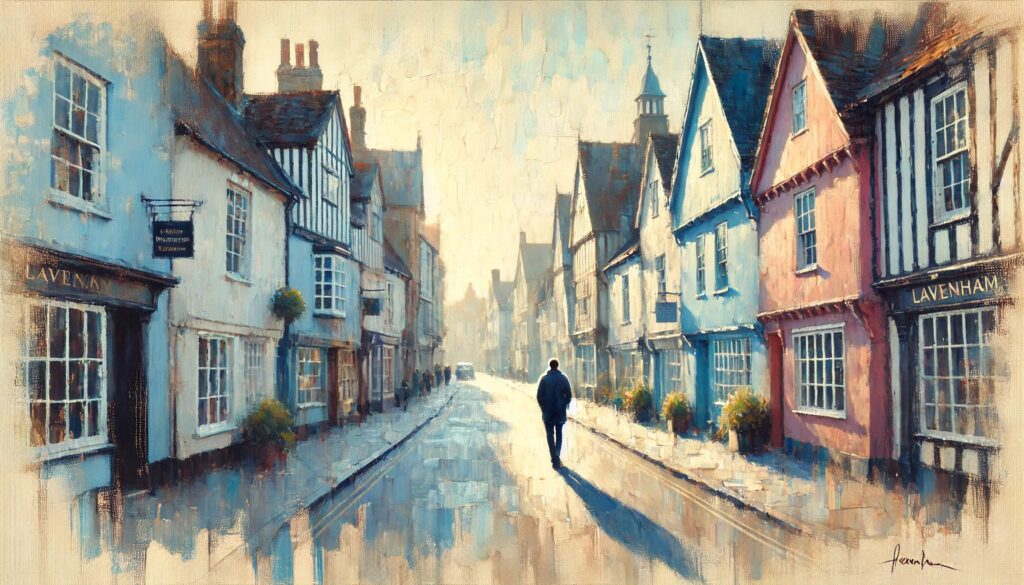ChatGPT:Lavenham is a picturesque village located in Suffolk, England. Known for its well-preserved medieval architecture, Lavenham boasts numerous timber-framed buildings, many of which date back to the 15th and 16th centuries. The village flourished during the medieval period as a significant center for the wool and cloth trade. Key attractions include the impressive St. Peter and St. Paul’s Church and the Guildhall of Corpus Christi, which now serves as a museum. With its cobbled streets, historical ambiance, and quaint charm, Lavenham is a popular destination for tourists interested in England’s rich heritage.
Lavenham, Its development is closely tied to the wool trade, which significantly influenced its prosperity during the medieval era.
Origin and Early History
Lavenham’s origins can be traced back to at least the 11th century, as it is mentioned in the Domesday Book of 1086 as “Lavenham.” The village’s early growth was modest, primarily as a small agricultural settlement.
Medieval Prosperity
The real transformation of Lavenham began in the 14th and 15th centuries, driven by the booming wool trade. Lavenham’s high-quality wool, known as “Lavenham Blue,” became highly sought after, particularly in Flanders and Italy. This trade brought considerable wealth to the village, leading to the construction of many of its iconic timber-framed buildings. The village became one of the wealthiest in England during this period.
Architectural Development
The wealth generated from the wool trade allowed Lavenham’s wealthy merchants to build grand homes and public buildings. Notable examples include the Guildhall of Corpus Christi, built in the early 16th century, and St. Peter and St. Paul’s Church, a fine example of late Gothic architecture. Many of these buildings have been well preserved, giving Lavenham its distinctive medieval character.
Decline and Modern Era
Lavenham’s prosperity began to decline in the late 16th century as the English wool trade faced increasing competition from other regions and the shift to the production of cheaper textiles. The village’s economic stagnation over the following centuries ironically helped preserve its historical buildings, as there was little development to alter its medieval layout.
In the 19th and early 20th centuries, Lavenham remained a relatively quiet rural village. However, the rise of heritage tourism in the latter half of the 20th century brought renewed attention and investment. Lavenham became recognized as one of England’s best-preserved medieval villages, attracting visitors from around the world.
Present Day
Today, Lavenham is a thriving tourist destination, known for its charming streets, historic buildings, and vibrant community. The village hosts various events and festivals, celebrating its rich history and cultural heritage.
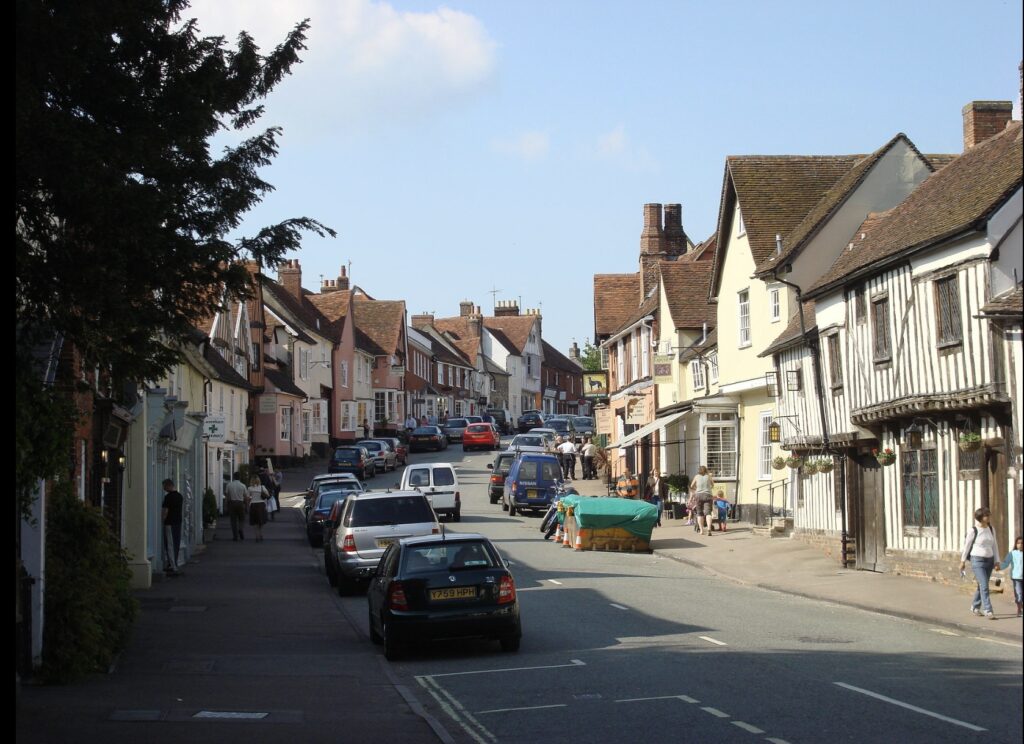
Other notable medieval wool towns in England include:
- Stamford, Lincolnshire
- Chipping Campden, Gloucestershire
- Winchcombe, Gloucestershire
- Northleach, Gloucestershire
- Burford, Oxfordshire
- Cirencester, Gloucestershire
- Tewkesbury, Gloucestershire
- Evesham, Worcestershire
- Ludlow, Shropshire
- Leominster, Herefordshire
- Southwold, Suffolk
- Long Melford, Suffolk
- Hadleigh, Suffolk
- Cranbrook, Kent
These towns, like Lavenham, flourished during the medieval period due to the wool trade, which brought significant wealth and led to the construction of many fine buildings that remain to this day.
Medieval architecture, spanning roughly from the 5th to the 15th century, encompasses a variety of styles that evolved over time, reflecting the changing social, political, and technological landscape. Key characteristics of medieval architecture include:
Romanesque Architecture (10th to 12th centuries)
- Rounded Arches: Prominent in doorways, windows, and arcades.
- Thick Walls: Built to support the weight of stone roofs and to provide defense.
- Small Windows: Limited in size to maintain structural integrity, often with deeply recessed walls.
- Barrel Vaults and Groin Vaults: Used to support the roof and create large interior spaces.
- Heavy, Solid Appearance: Reflecting a fortress-like feel, often with minimal exterior decoration.
Gothic Architecture (12th to 16th centuries)
- Pointed Arches: Allowed for taller and more flexible designs in windows and doorways.
- Ribbed Vaults: Provided additional structural support, enabling the construction of more complex and larger buildings.
- Flying Buttresses: External supports that transferred the weight of the roof and walls, allowing for taller structures and more expansive windows.
- Large Stained Glass Windows: Filled with intricate designs and vibrant colors, depicting biblical scenes and saints.
- Vertical Emphasis: Buildings appeared to reach toward the heavens, symbolizing spiritual aspiration.
- Ornate Decoration: Facades adorned with sculptures, carvings, and intricate tracery.
Key Elements in Both Styles
- Churches and Cathedrals: Central to medieval communities, often the most grand and elaborately designed buildings.
- Castles and Fortified Structures: Built for defense with features like battlements, towers, and moats.
- Timber-Framed Buildings: Common in residential and commercial structures, especially in regions with abundant forests. Visible wooden beams with plaster or brick infill.
- Crenellations: Parapets with regular gaps (embrasures) for defense on castles and walls.
- Symmetry and Proportion: Attention to geometric shapes and the harmonious balance of design elements.
These characteristics varied across regions and over time but collectively define the architectural landscape of the medieval period.
Lavenham, renowned for its well-preserved medieval architecture, offers several historical monuments and tourist attractions:
- Guildhall of Corpus Christi: A 16th-century timber-framed building, now a museum, showcasing Lavenham’s rich history.
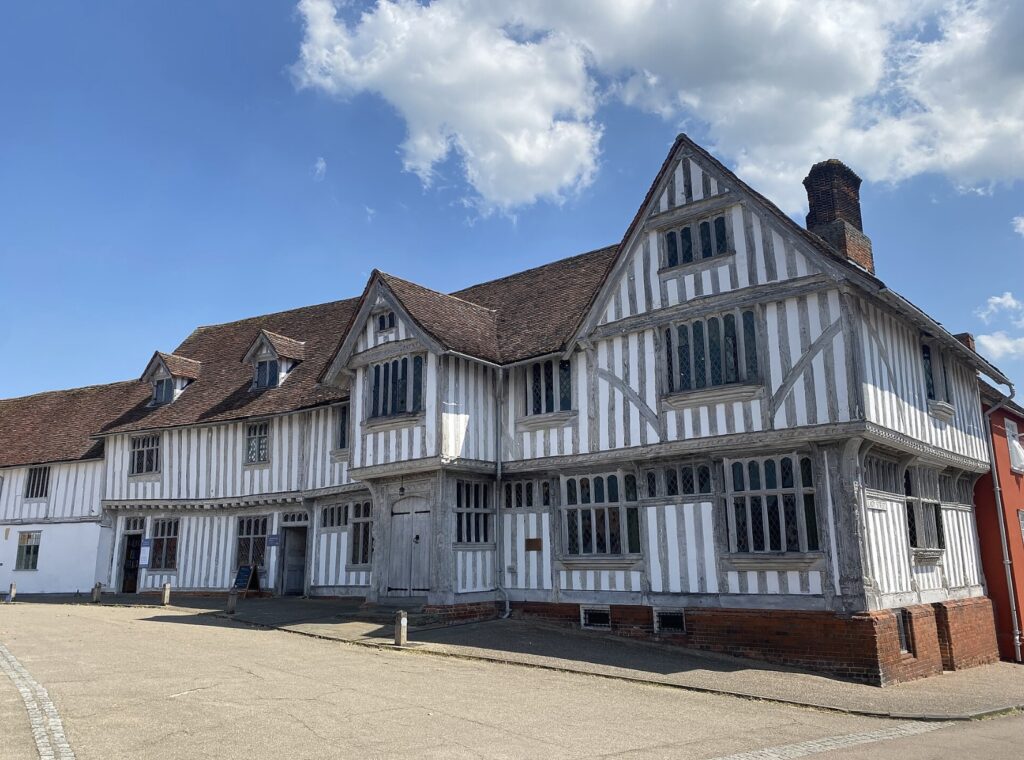
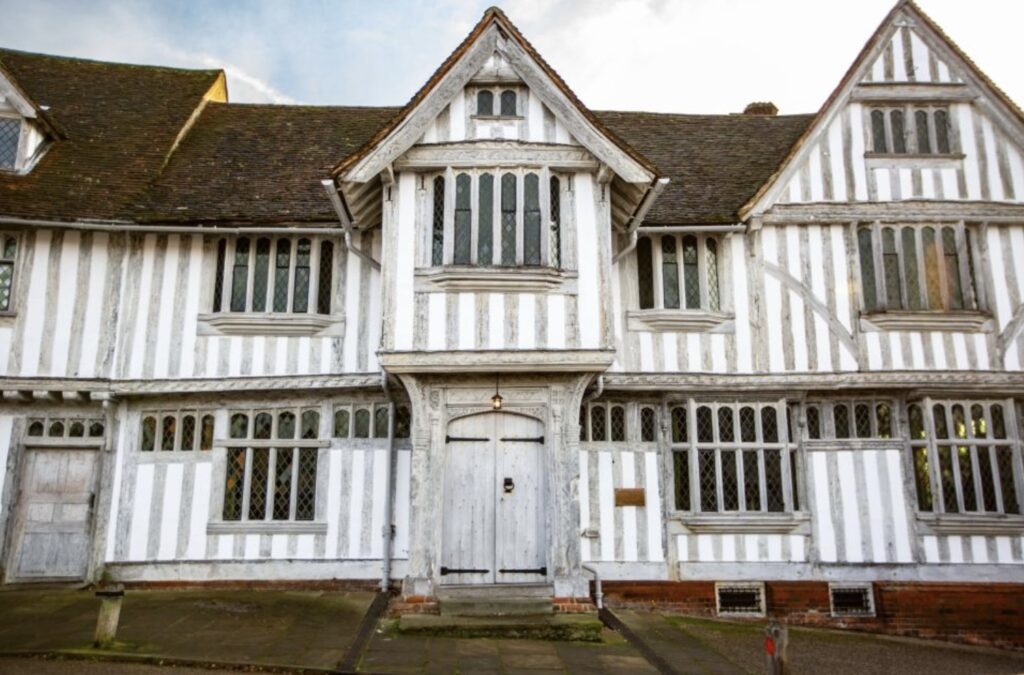
- St. Peter and St. Paul’s Church: A magnificent example of late Gothic architecture, known for its tall tower and intricate interior.
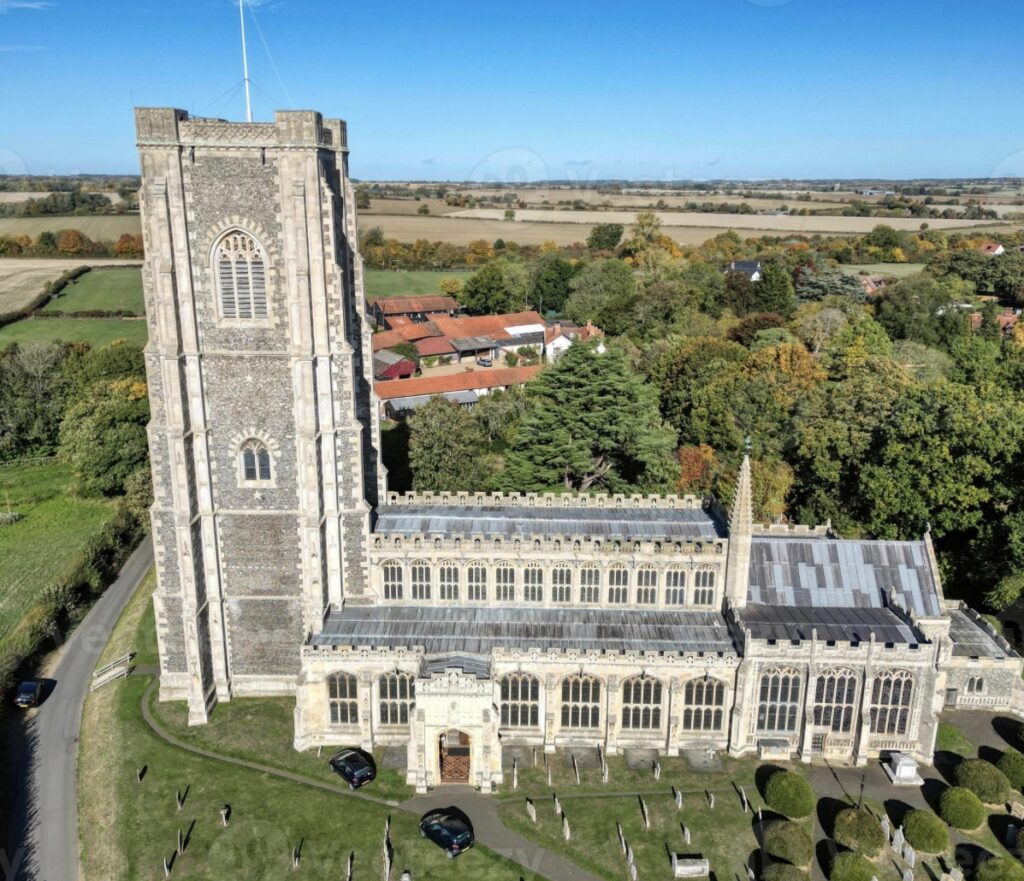
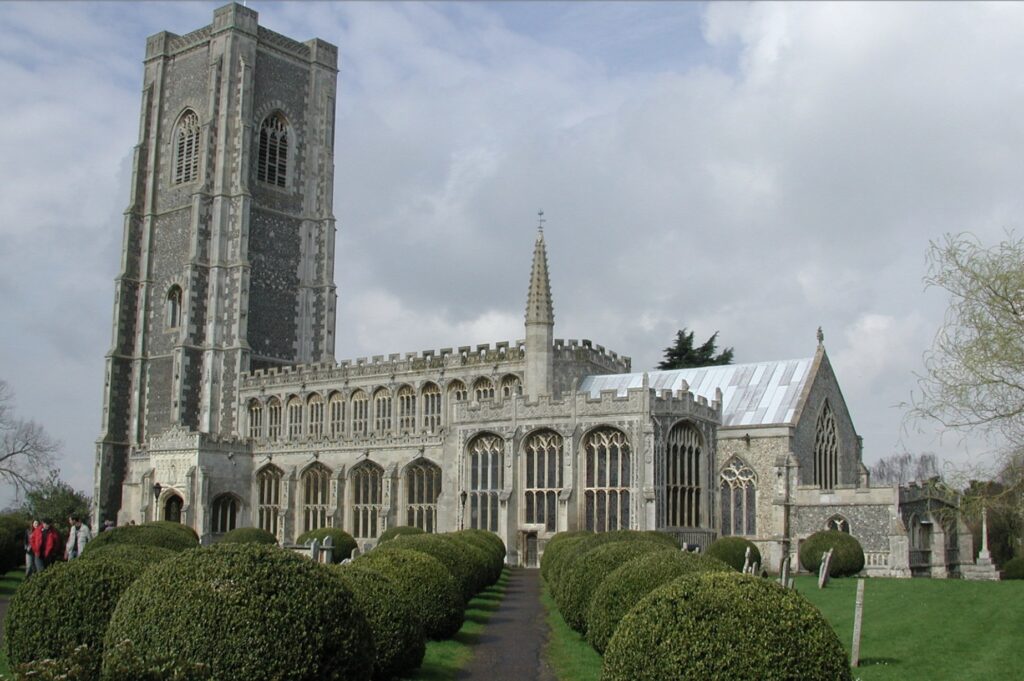
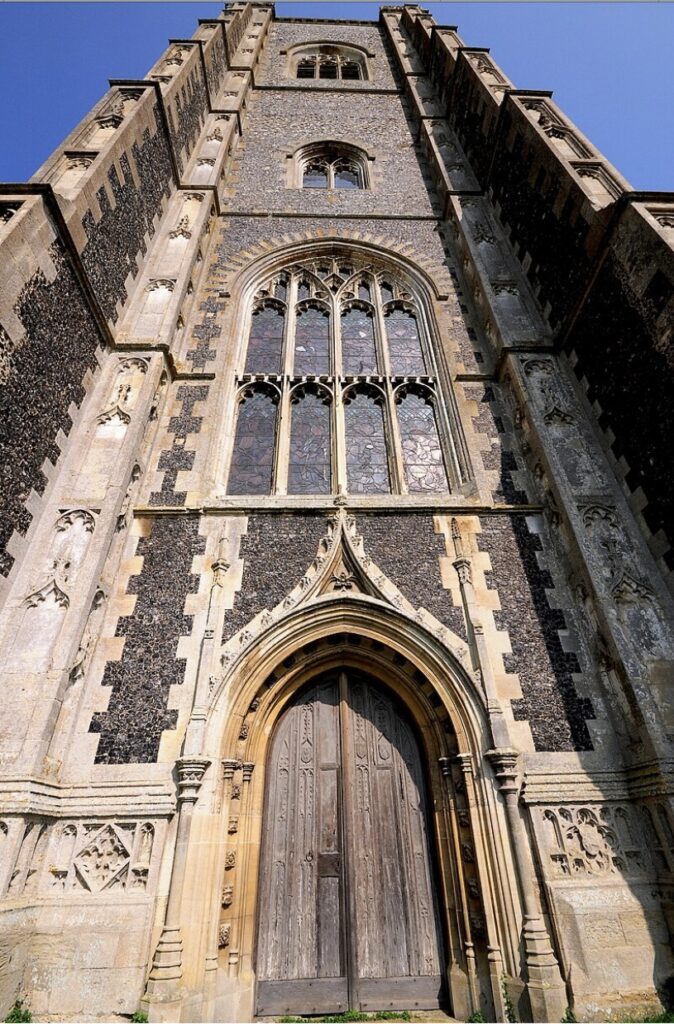
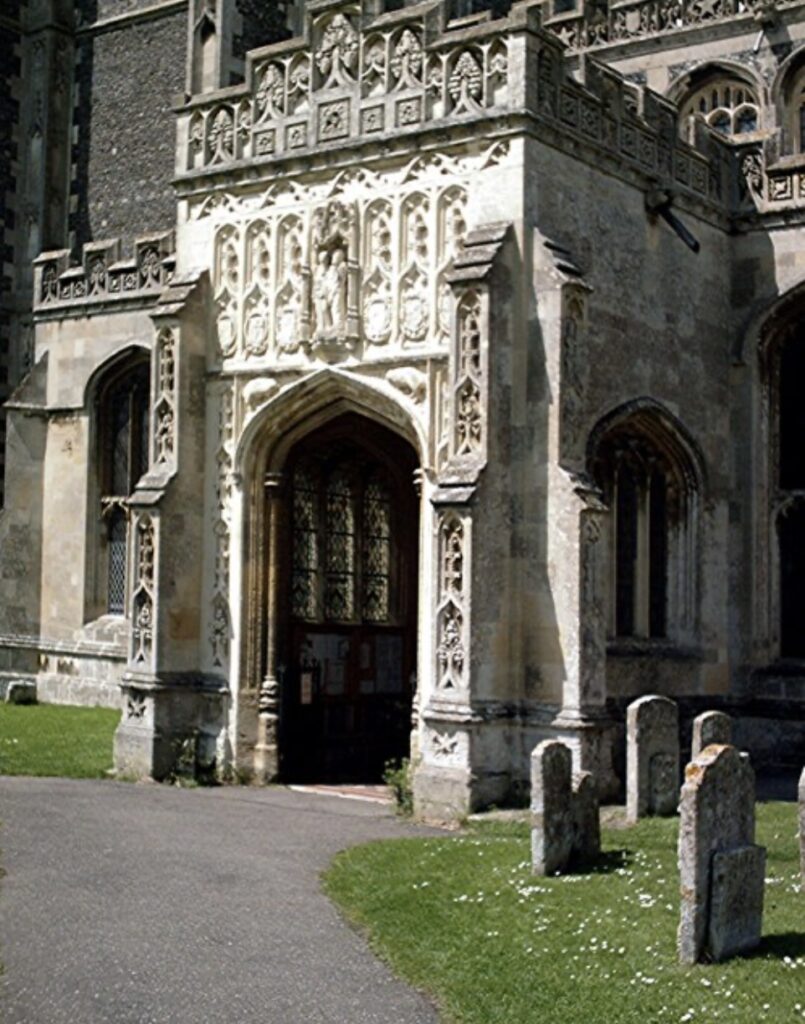
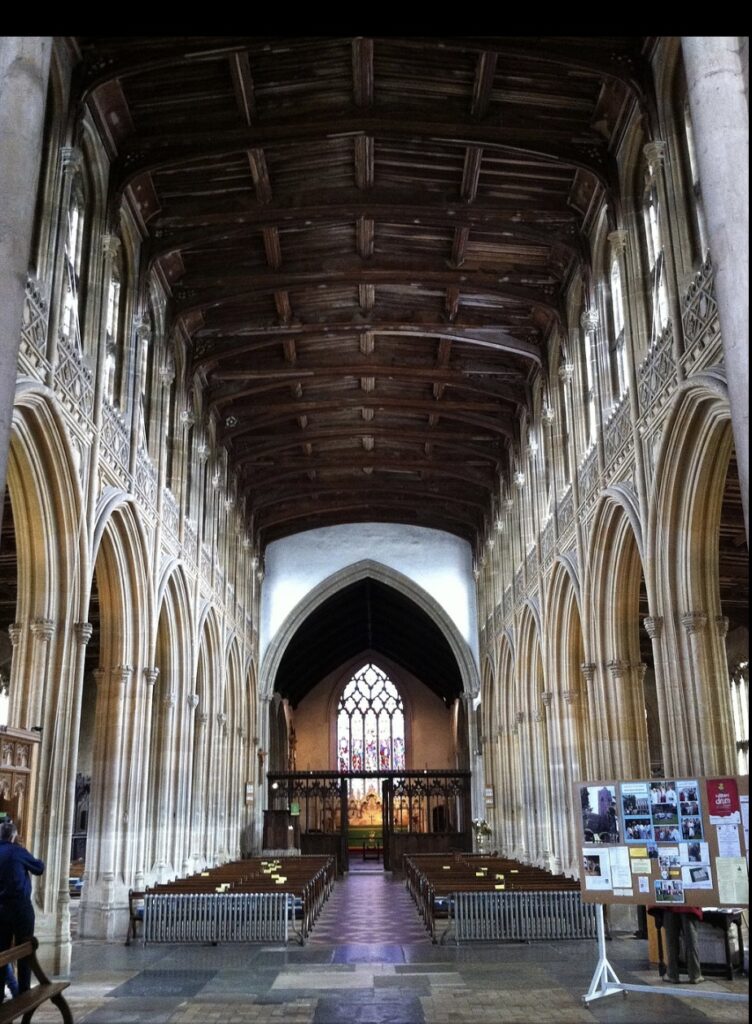
- Little Hall: A 14th-century hall house, now a museum, featuring period furniture and exhibits on the local history.
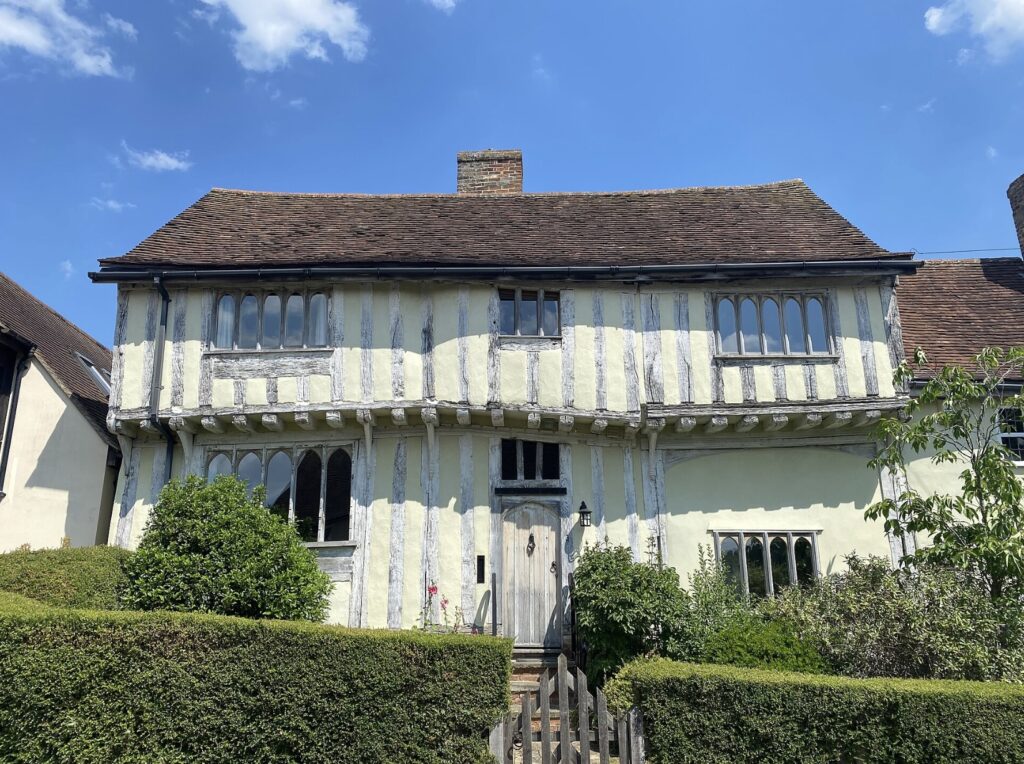
- De Vere House: Famous for its distinctive facade and historical significance, this house has also appeared in the “Harry Potter” film series.
- The Market Place: The central hub of Lavenham, surrounded by historical buildings and often hosting local events and markets
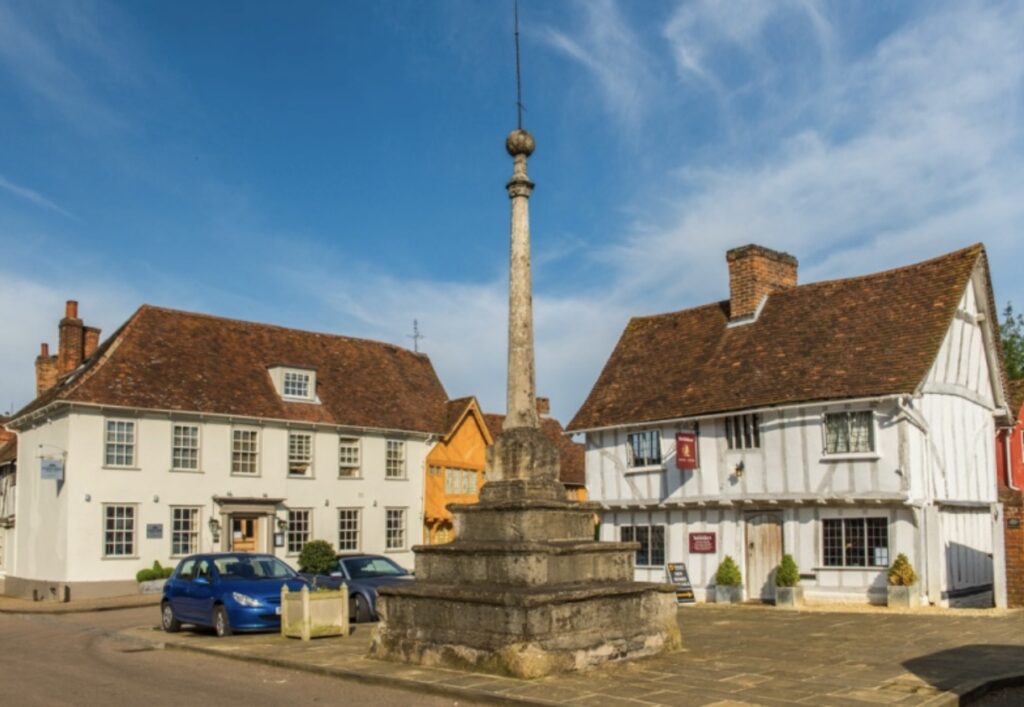
- Lavenham Priory: A former medieval priory turned private residence, offering bed and breakfast accommodations with a historical ambiance.
- The Crooked House: An iconic and photogenic timber-framed house known for its noticeable tilt.
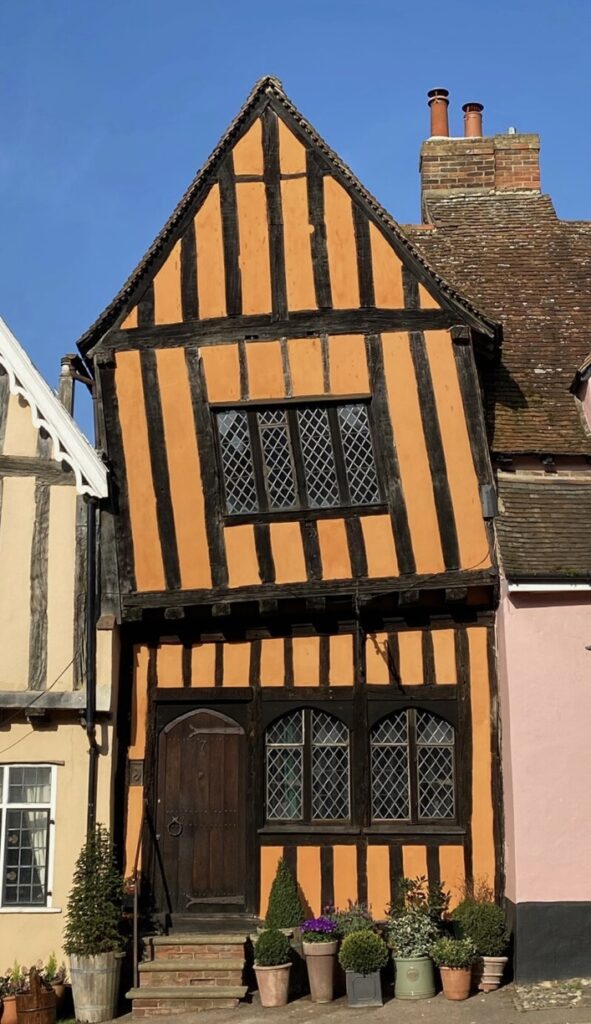
- Lavenham Walk: A scenic walking trail that allows visitors to explore the picturesque countryside and appreciate the village’s setting.
- Swan Hotel: A historic coaching inn dating back to the 15th century, offering a blend of traditional charm and modern amenities.
- The Wool Hall: An important historical building linked to Lavenham’s wool trade heritage, now housing various local businesses and events.
These attractions provide a glimpse into Lavenham’s rich past and its importance as a medieval wool town.
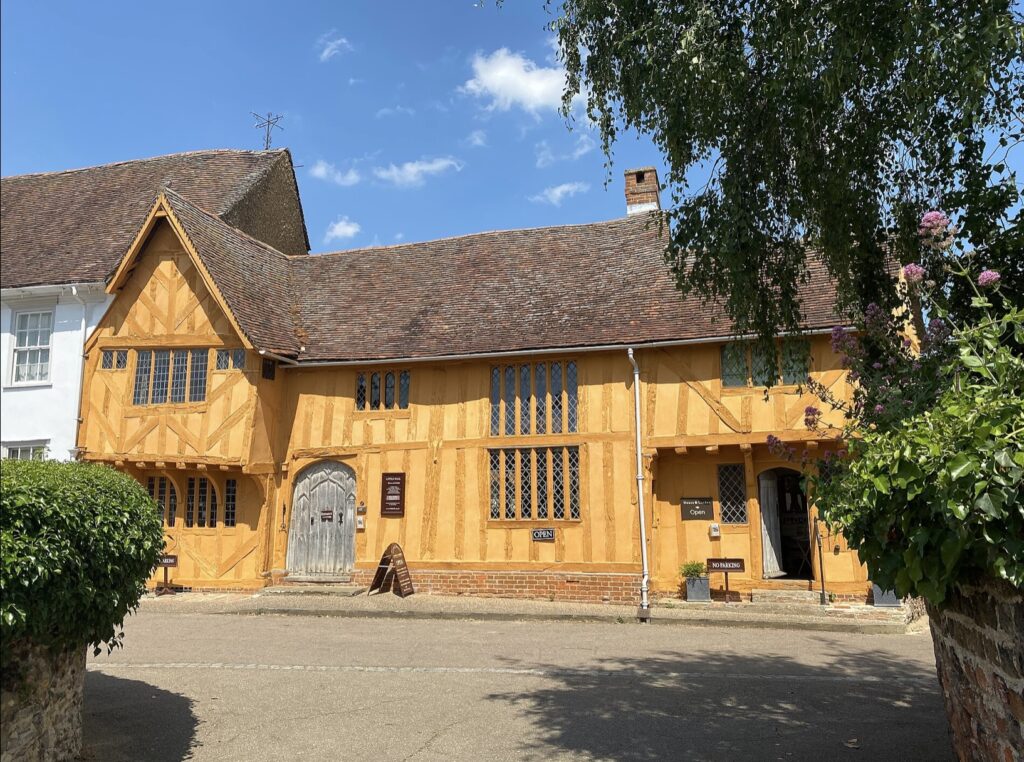
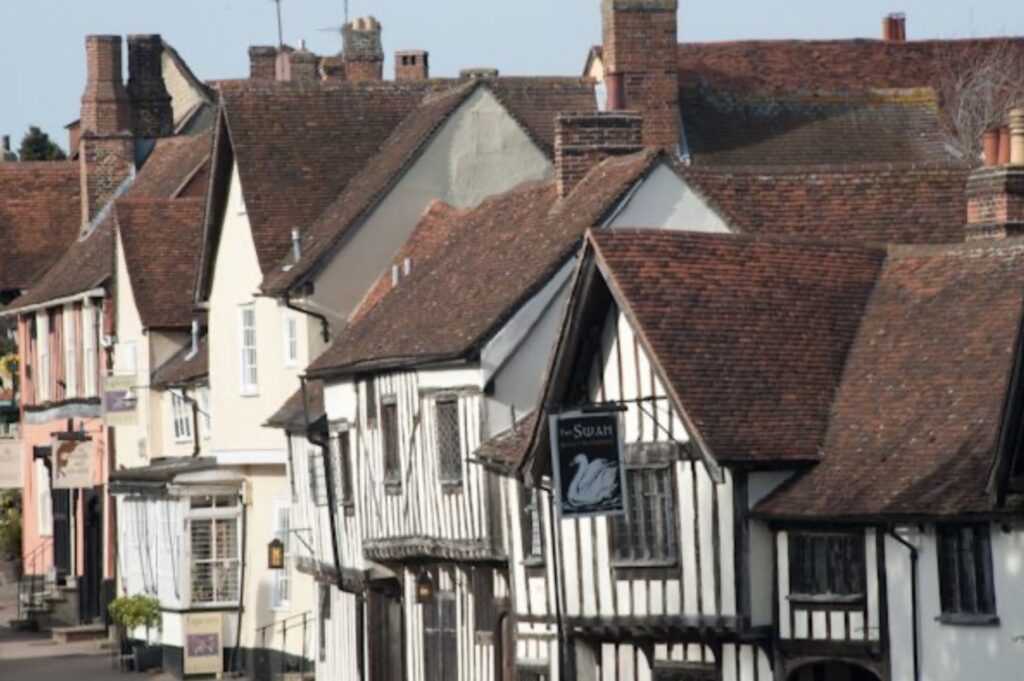
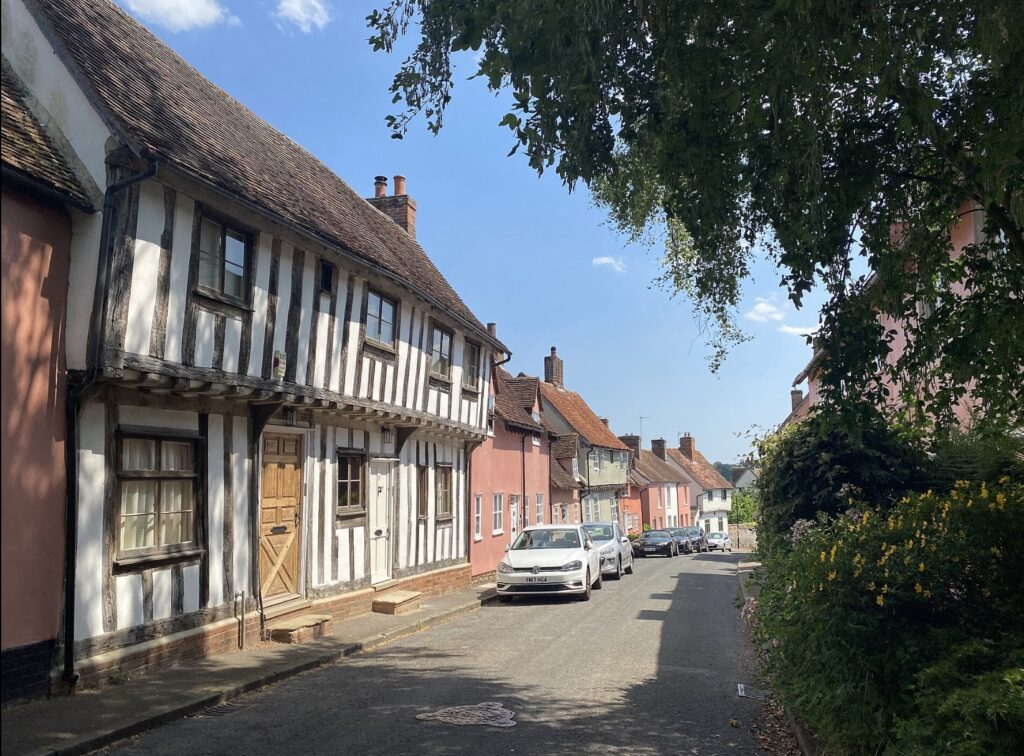
One Day Itinerary for Visiting Lavenham
Morning
- Arrival and Breakfast at The Swan Hotel (8:30 AM – 9:30 AM)
- Start your day with a hearty English breakfast at The Swan Hotel, a historic coaching inn. Enjoy the traditional ambiance and fuel up for your day of exploration.
- Visit St. Peter and St. Paul’s Church (9:45 AM – 10:30 AM)
- Head to St. Peter and St. Paul’s Church, an architectural masterpiece with its impressive tower and intricate interior. Take some time to explore the church and its surroundings.
- Explore the Guildhall of Corpus Christi (10:45 AM – 12:00 PM)
- Visit the Guildhall, now a museum, to learn about Lavenham’s history and its significance in the wool trade. The exhibits provide a fascinating insight into the village’s medieval past.
Lunch
- Lunch at Number Ten (12:15 PM – 1:30 PM)
- Enjoy a delightful lunch at Number Ten, a charming café offering a selection of local and seasonal dishes. Try some traditional Suffolk fare such as Suffolk ham, local cheeses, and freshly baked bread.
Afternoon
- Stroll Through The Market Place and Visit Little Hall (1:45 PM – 3:00 PM)
- Wander around The Market Place, the heart of Lavenham, surrounded by beautiful medieval buildings. Then, head to Little Hall, a 14th-century hall house now serving as a museum. Explore the period furnishings and historical exhibits.
- Photo Opportunity at The Crooked House (3:15 PM – 3:45 PM)
- Make your way to The Crooked House, an iconic and photogenic timber-framed building known for its noticeable tilt. It’s a great spot for some memorable photos.
- Tea Break at Lavenham Blue Vintage Tea Rooms (4:00 PM – 4:45 PM)
- Take a relaxing tea break at Lavenham Blue Vintage Tea Rooms. Enjoy a traditional English tea with scones, clotted cream, and jam, as well as a selection of cakes and pastries.
Evening
- Visit De Vere House and Lavenham Priory (5:00 PM – 6:00 PM)
- Conclude your sightseeing with a visit to De Vere House, known for its distinctive facade and historical significance. Then, take a short walk to Lavenham Priory, a beautifully restored medieval priory offering a glimpse into the village’s monastic past.
Dinner
- Dinner at The Great House (6:30 PM – 8:00 PM)
- End your day with a gourmet dinner at The Great House, a renowned restaurant offering French and modern European cuisine with a focus on locally sourced ingredients. Enjoy a delicious meal in a refined setting.
Departure
- Evening Walk and Departure (8:00 PM)
- Take a leisurely evening stroll around the village, soaking in the historical ambiance and charming atmosphere before departing Lavenham.
This itinerary ensures you experience the best of Lavenham’s historical attractions, local cuisine, and unique charm in a single day.
